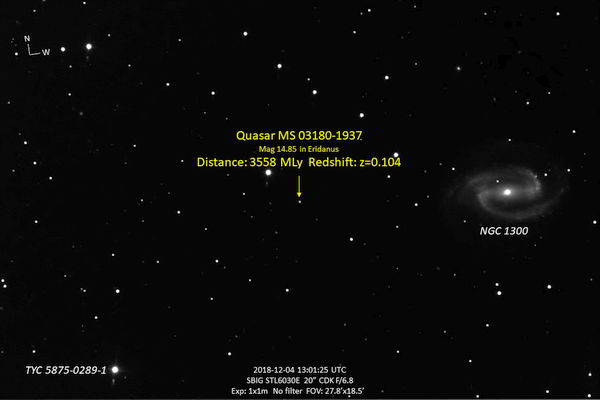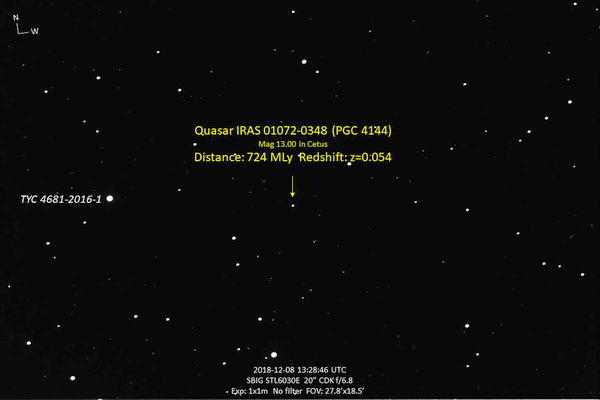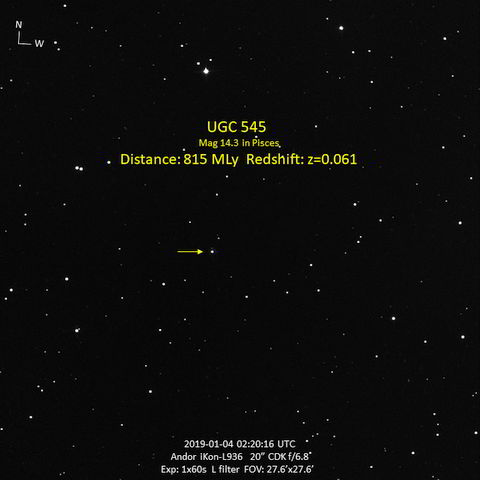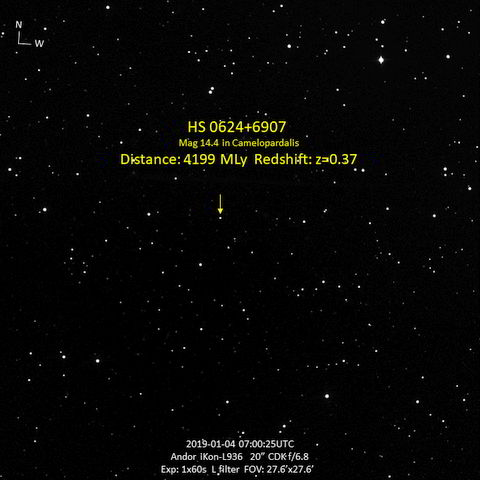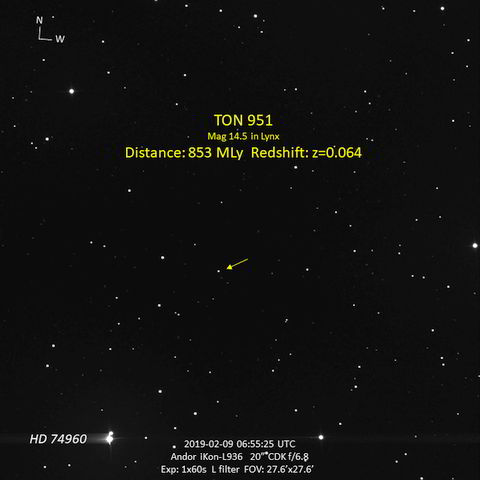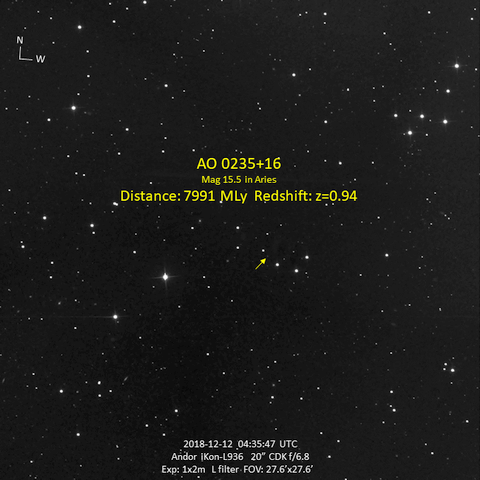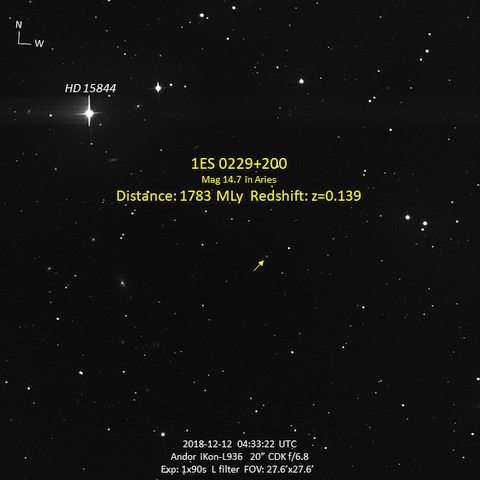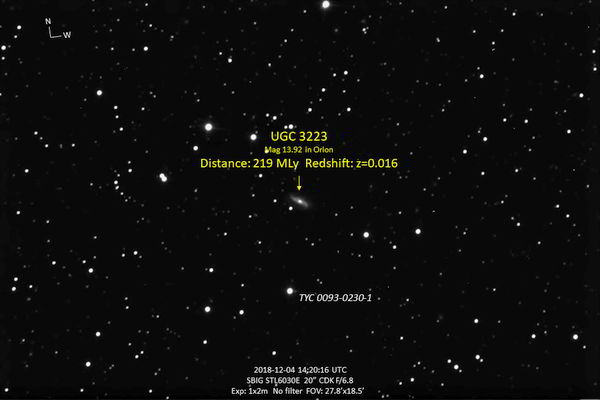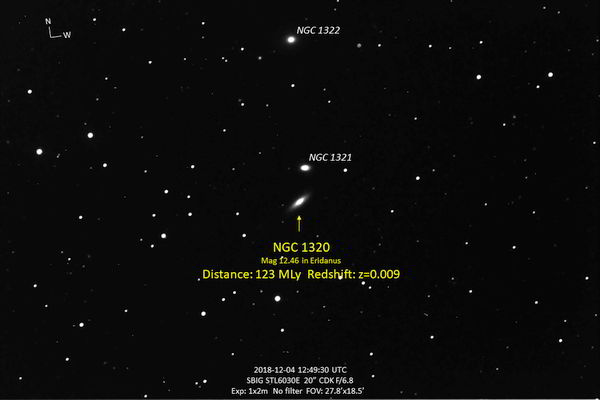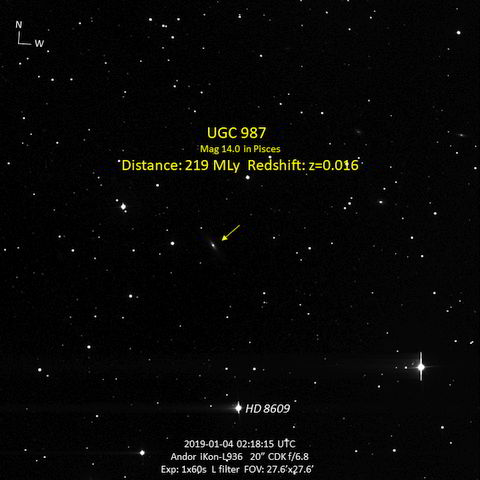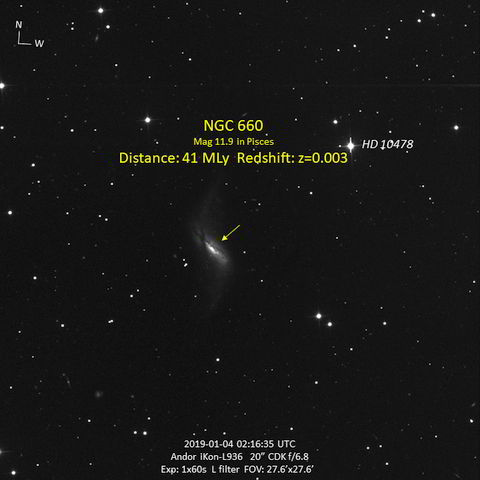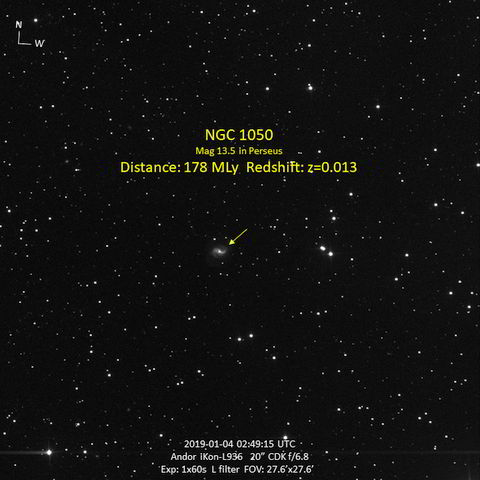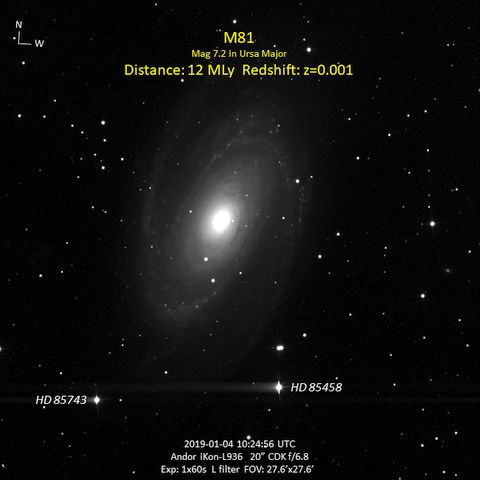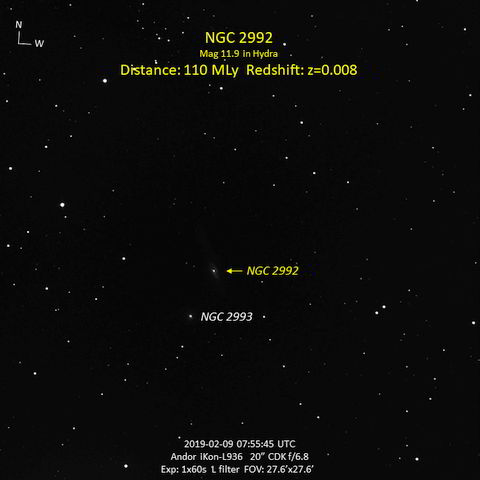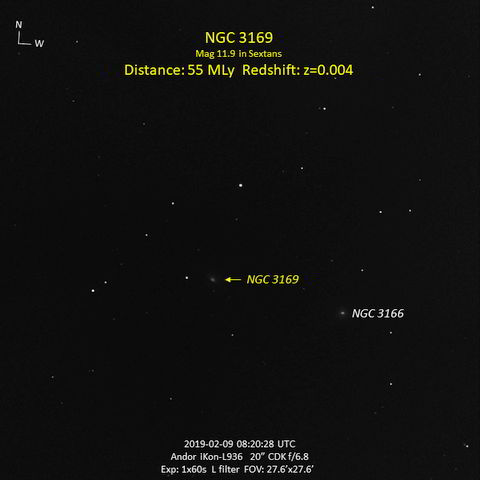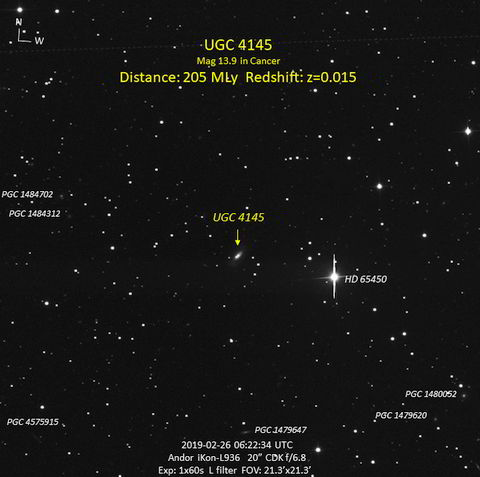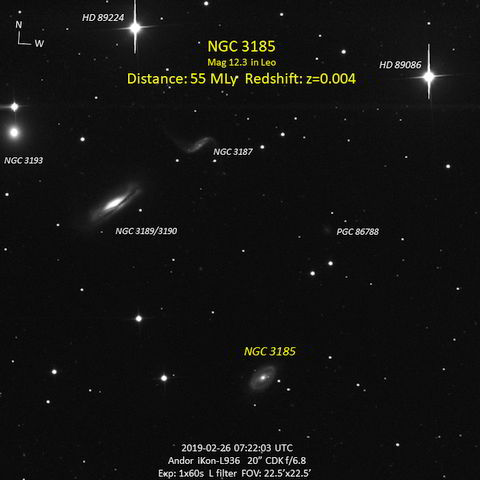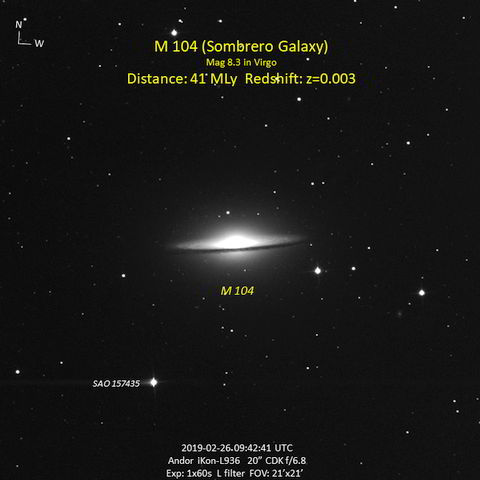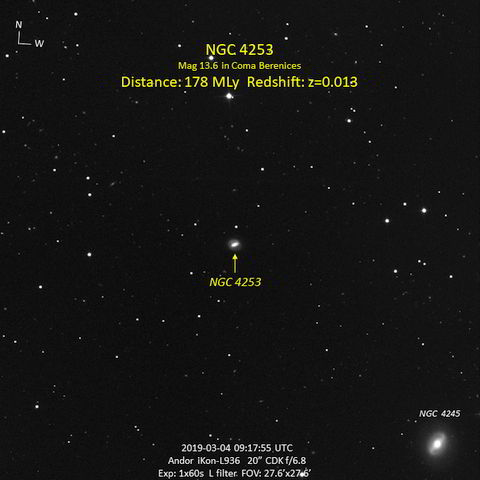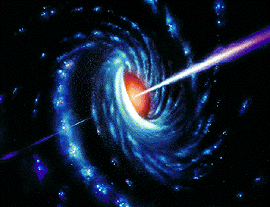
Image credit: space.mit.edu
Observed for the Astronomical League's Active Galactic Nuclei Observing Program
Updated 06/19/23 09:14 PM -0400

Image credit: Caltech/NASA
Active Galactic Nuclei are the highly energetic compact regions at the centers of some galaxies and are the most luminous sources of electromagnetic radiation in the universe. The gaseous jets that emanate from active galaxies are driven by the massive black holes at their centers. Magnetic forces propel material at relativistic speeds away from black holes.. These Active Galactic Nuclei -- blazars and quasars -- represent some of the most energetic objects in the universe.
The purpose of this Observing Program is to provide an opportunity to observe or image various types of Active Galactic Nuclei (AGN) which emit much of their energy in the visible wavelengths, specifically Quasars, BL Lacertae Objects (BLO), and Seyfert galaxies. Thirty images are required. Current tally: Quasars=12 BLO=3 Seyferts=15
All images were taken using remote 0.51m telescopes through sierrastars.com. The Gemini telescope, located in Sonoita, AZ, is a 0.51m f/6.8 Planewave CDK20 fitted with an Andor iKon-L 936 camera. The Warrumbungle telescope, located in Coonabarabran, New South Wales, Austrailia, is a 0.51m f/6.8 Planewave CDK20 fitted with an SBIG STL6303E camera.
Unless indicated otherwise, images are single uncropped monochrome exposures, calibrated scope-side in MaximDL. Minimal levels &curves adjustments were applied in Photoshop. Image dimensions and orientations were obtained using nova.astrometry.net.
In the images below, distance in light years and redshift z values are shown.The z value indicates the galaxy's speed away from us relative to the speed of light. The redshift value also tells us the size of the universe when light left the galaxy being observed. For example, at the time corresponding to redshift z = 0.1, all galaxies in the universe were 10% closer together. A measured value of z = 0.2 corresponds to a time when galaxies were 20% closer together than they are now, and so on.

